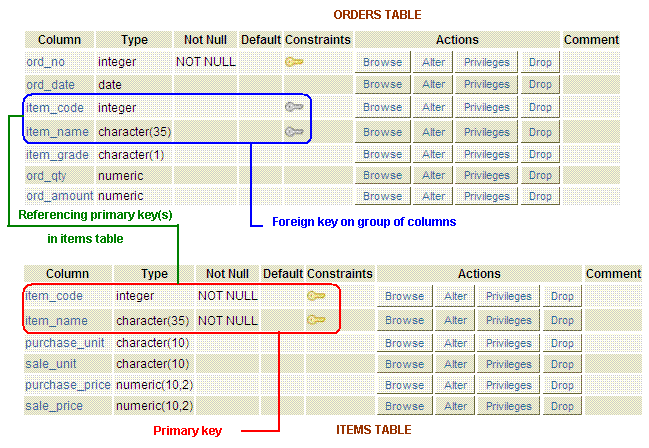

Syntax to create a unique constraint using ALTER TABLE in PostgreSQL:ĪDD CONSTRAINT constraint_name UNIQUE (column1, column2. ) Create a unique Constraint – using the ALTER TABLE operator We can also create a unique constraint with more than one field, as in the example below:ĬONSTRAINT order_date_unique UNIQUE (order_id, order_date) In this example, we created a unique restriction for the order_details table called order_unique. ( order_detail_id integer CONSTRAINT order_details_pk PRIMARY KEY,ĬONSTRAINT order_unique UNIQUE (order_id)
#Postgresql constraint how to#

column1, column2 – The columns you want to create in the table.table_name – The name of the table you want to create.Syntax to create a unique constraint using the CREATE TABLE operator in PostgreSQL:ĬONSTRAINT constraint_name UNIQUE (uc_col1, uc_col2. Some fields that are part of the uniqueness constraint may contain zero values if the combination of values is unique.Ĭreate a unique Constraint – use the CREATE TABLE operator None of the fields, which are part of the primary key, can contain zero value. What is the difference between a unique constraint and a primary key? Primary key Some fields may contain zero values if the combination of values is unique. What is a unique constraint in PostgreSQL?Ī unique constraint is a single field or a combination of fields that uniquely define a record. PostgreSQL: Creating Tables with Constraints | Course.Create a unique Constraint – using the ALTER TABLE operator.Create a unique Constraint – use the CREATE TABLE operator.What is a unique constraint in PostgreSQL?.The first two constraints are column constraint but the third one is table constraint and a name valid_qty have assigned for table constraint. Here, CHECK constraint refer more than one columns. The above example shows, the table despatch have created in which the ord_qty and des_qty columns can not contain any value less than or equal to zero(0). PostgreSQL CHECK constraint as table constraints SQL CREATE TABLE despatch(ĬONSTRAINT valid_qty CHECK(des_qty>=ord_qty) The column constraint can be written as table constraint but the otherwise not possible. The first two constraints are column constraint but the third one is table constraint because it is written separately. PostgreSQL CHECK constraint more columns SQL CREATE TABLE despatch( Here, a constraint name has included such a manner that the keyword CONSTRAINT followed by the named constraint positive_ord_amount followed by the expression. The above example shows, the table orders have created in which the ord_amount column can not contain any value less than or equal to zero(0). Ord_amount numeric CONSTRAINT positive_ord_amount CHECK (ord_amount>0) PostgreSQL CHECK constraint in a separate name PostgreSQL CHECK example SQL CREATE TABLE orders(

The CHECK constraint in PostgreSQL can be defined as a separate name.
#Postgresql constraint update#
The attempt will be rejected when update or insert column values that will make the condition false. The CHECK constraint consists of the keyword CHECK followed by parenthesized conditions. The PostgreSQL provides the CHECK constraint, which allows the user to define a condition, that a value entered into a table, has to satisfy before it can be accepted. The PostgreSQL CHECK constraint controls the value of a column(s) being inserted.


 0 kommentar(er)
0 kommentar(er)
